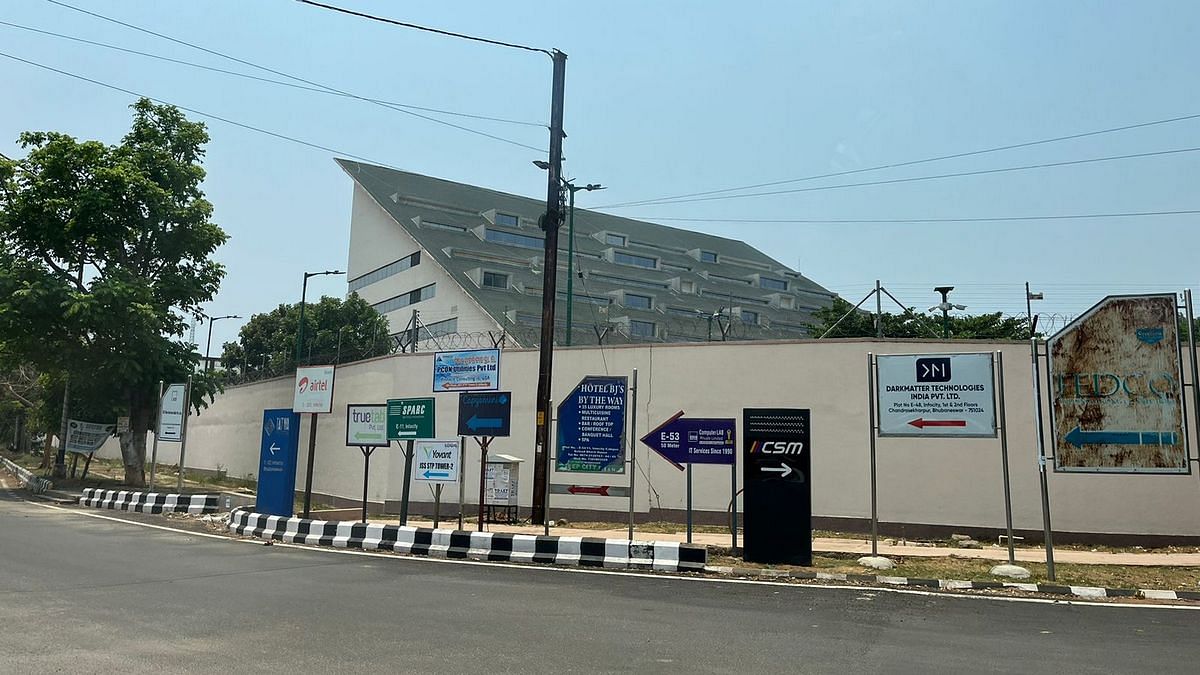“One has to attract them (companies) by providing suitable facilities and environment. Bhubaneswar has done it in the last few years,” said an official from the Housing & Urban Development Department on the condition of anonymity.
With Odisha voting concurrently in the Lok Sabha and Assembly elections in four phases—13 May, 20 May, 25 May, and 1 June—the ruling Biju Janata Dal (BJD) is highlighting Bhubaneswar’s development as one of the main reasons to vote for Chief Minister Naveen Patnaik for the sixth time.
“Development is our identity,” Patnaik said in a speech earlier this month, also pledging to make Odisha the number 1 state in the country by 2036. Meanwhile, BJP leaders, including party president JP Nadda, have been arguing in their campaign speeches that the BJD is unfairly taking credit for central initiatives and funding.
As for Saxena, he’s now planning to buy a house and relocate his family to Bhubaneswar. “The connectivity is excellent, and the city is remarkably clean,” he said. “Bhubaneswar offers everything one needs for a peaceful life in a modern city.”
Also Read: BMRC CEO not perturbed with doubters of Bhubaneswar Metro project. ‘We are being future ready’
Bhubaneswar’s development model
Over the last 10 years or so, Bhubaneswar has undergone a remarkable makeover, evolving from a city with limited infrastructure to boasting wide roads, bridges, parks, and flyovers.
A significant portion of this improvement has been since 2016, when Bhubaneswar was selected for the Smart City Mission (SCM)—a centrally sponsored initiative aimed at developing infrastructure, mobility, security, sanitation, technological integration, and service delivery in urban areas. This mission requires matching contributions from state governments as well as initiatives from local bodies.
According to reports, as of December 2023, Bhubaneswar received Rs 997.93 crore for SCM projects, of which Rs 911.86 have been spent to complete over two dozen projects. Another six projects are still in progress.
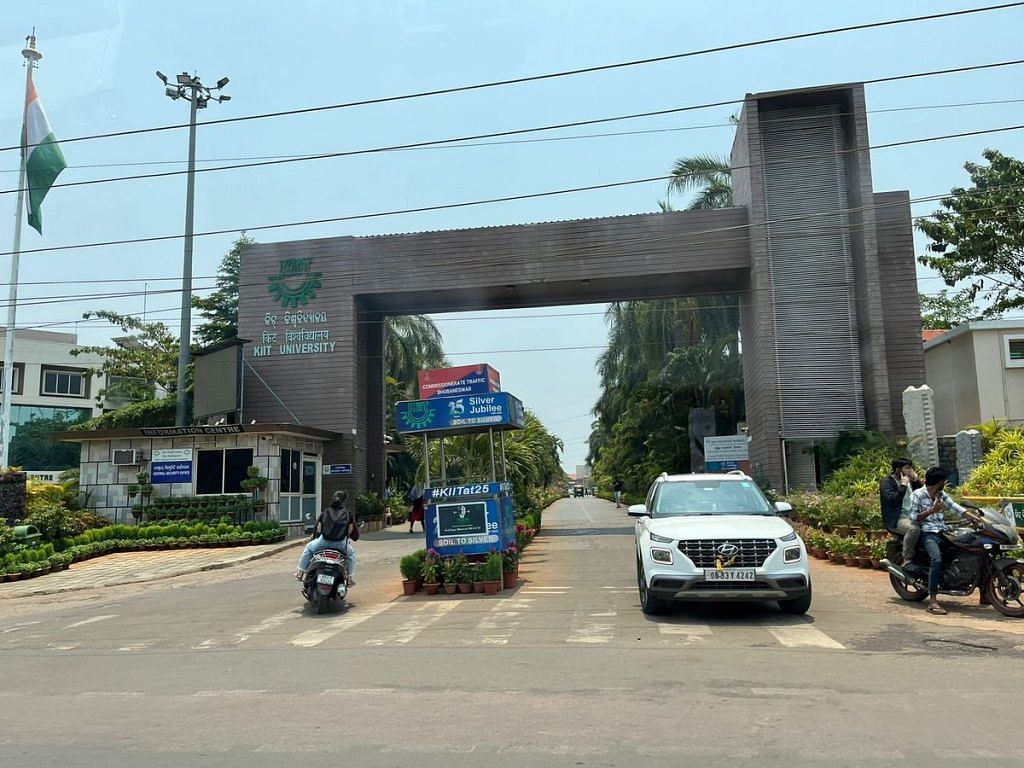
State government officials, however, say that Bhubaneswar’s development story is not attributable only to the SCM.
“The government has been pushing the agenda of infrastructure development over the last two decades. Key incentives include the development of smart roads, installation of LED street lights, augmentation of urban infrastructure, development of parks and public spaces, and improved solid waste management to make Bhubaneswar a ‘Smart City’,” said a senior government official involved in various infrastructure development projects.
Various state schemes, such as the Jaga Mission to upgrade slums into “liveable habitats”, the Ama Pokhari urban waterbody rejuvenation programme, the Mo Bus intercity public transport services, and the Drink from Tap Mission to provide 24/7 piped water to urban households have also contributed to boosting Bhubaneswar’s quality of life, according to the official.
A major issue in Bhubaneswar has been the rise in slums, attributed to rapid urban growth and the resultant influx of workers over the past 10-15 years. To address this, an agenda of inclusive development has been followed. “Bhubaneswar has almost 40 per cent of the population living in slums. Out of 463 slums, we have transformed 135 slums (through the Jaga Mission),” said the official.
The Bhubaneswar Municipality Corporation (BMC) has also been leading various projects to improve the city’s liveability.
“In the last 10 years, we have constructed 78 km of main drains that take the discharge of all the catchment of the entire city through connected tertiary drains. We have also opened health centres and shelter homes in the city, and a lot more will happen in the upcoming years,” said a senior BMC official.
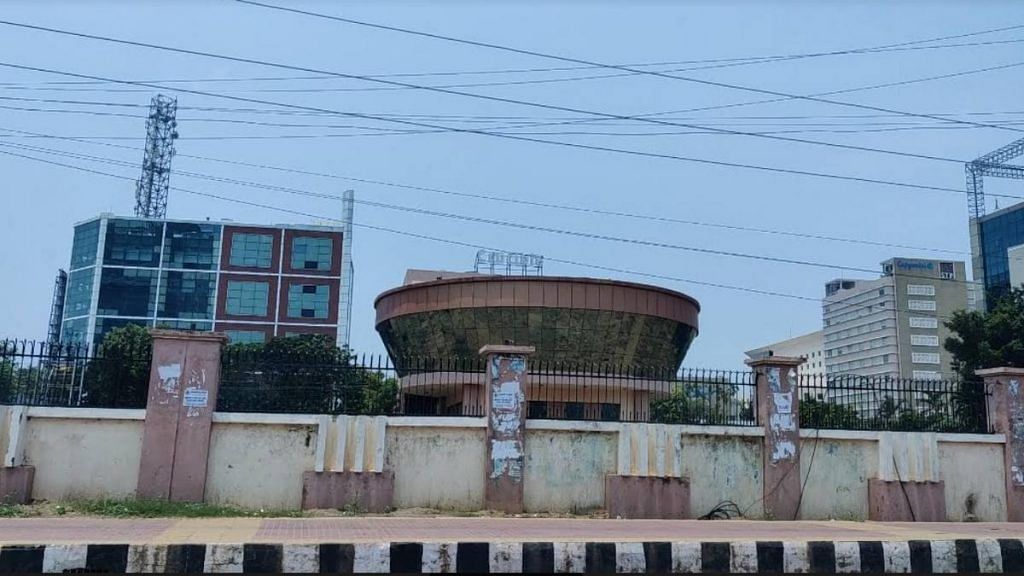
Connectivity is also a major component of Bhubaneswar’s infrastructure. The Mo Bus service, which started with 100 buses in November 2018, now operates across all major locations in Bhubaneswar, Cuttack, Puri, Sambalpur, and beyond. This service has won several accolades, including the United Nations Public Service Awards 2022 and the 15th Urban Mobility India Award 2022.
“A total number of 450 buses are running in Bhubaneswar, Sambalpur, Puri, Cuttack, and Rourkela, including 50 electric buses. We have placed an order for more than 200 buses to meet the demand. On average, we serve more than 2.50 lakh riders daily,” said Sanjay Biswas, head of urban transport with the Bhubaneswar civic body.”
In addition to this, Bhubaneswar airport is today one of the region’s busiest, with increased connectivity to various cities.
“Exponential development took place in the civil aviation sector,” said Prasanna Mishra, former additional chief secretary to the government of Odisha. “One couldn’t have imagined someone from Mumbai coming to Bhubaneswar, finishing their job, and returning to Mumbai at night. But that has started happening. Bengaluru is also now very conveniently connected to Bhubaneswar. There are many flights because of the number of people working in the software industry.”
Parks, universities, hospitals
Bhubaneswar has gone beyond its well-developed road and transport network to create a robust social infrastructure. Modern parks, universities, and hospitals are now prominent features of the city.
Every day, 35-year-old Ruby takes her son to Madhusudan Park in Bhubaneswar for his skating practice. For her, parks like this are among the city’s most valuable additions.
“In the last few years, many facilities have come up in terms of infrastructure. Roads have become so big and clean. But for a housewife like me, these parks are really important. I can bring my son and enjoy the evening with other ladies,” she said.
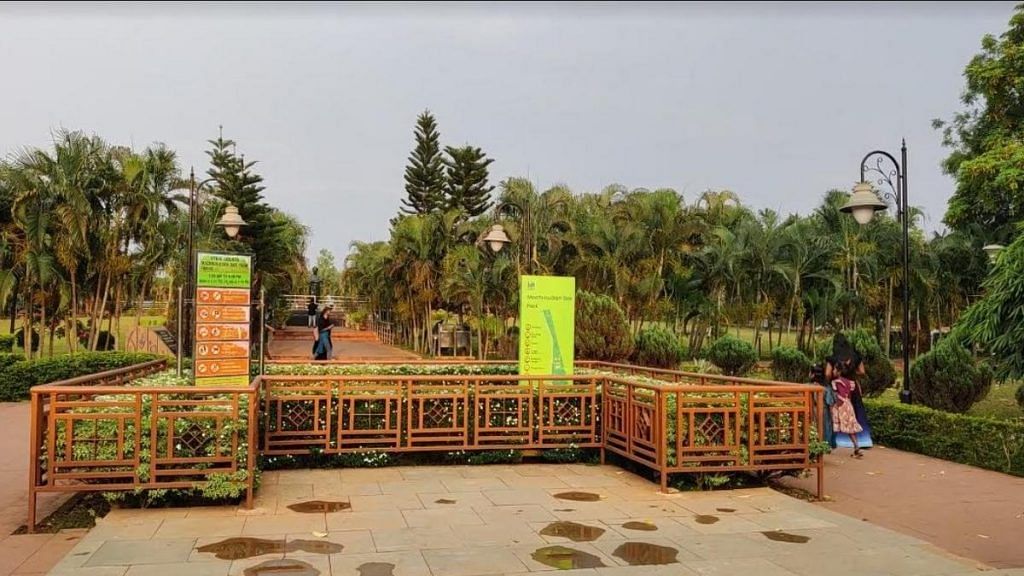
In the last 15 years, the government has been on a park-building spree, with sprawling green spaces evident every couple of kilometres. Many of these parks feature not only walking paths, benches, and neatly kept trees, but also skating rinks and outdoor gyms. They are also remarkably litter-free.
Beyond recreational spaces and IT parks, Bhubaneswar is also investing in education and healthcare in a bid to become an education and medical hub.
“Over time, the government recognised the potential of Bhubaneswar as an educational centre. Many engineering colleges, research institutes, and national-level institutions like the Indian Institute of Technology (IIT) and All India Institute of Medical Sciences (AIIMS) were established, transforming the city into an educational hub,” said Mishra.
People from across the world now come to study in Bhubaneswar, while its hospitals draw patients from states such as West Bengal and Andhra Pradesh.
“The city has a multitude of renowned hospitals and universities, and people from around India come to them,” said Syed Maqbool Ali, working president of the Bhubaneswar Metropolis Management Association and a former member of the National Road Safety Council. “Foreign students from Turkey, Afghanistan, Yemen, Somalia, Dubai, etc come to study here.”
Provincial town to smart city
The capital of Odisha was shifted from Cuttack to Bhubaneswar in 1949. Known for its ancient Saivite temples, the new seaside location offered several advantages—plenty of vacant land, relatively pleasant weather, and a ready supply of water from the nearby Kuakhai and Daya Rivers.
At first, however, ambitions were somewhat limited, according to former IAS officer Mishra, who now works as an independent public policy adviser in Bhubaneswar.
“The government conceived the city to be a medium-sized town veering around government institutions and offices. So, the urban planning was not very far-sighted,” he said. “(Initial development) was done to cater to government employees—a small market, a small auditorium, and a limited number of residential houses. At the centre of it was the state secretariat.”
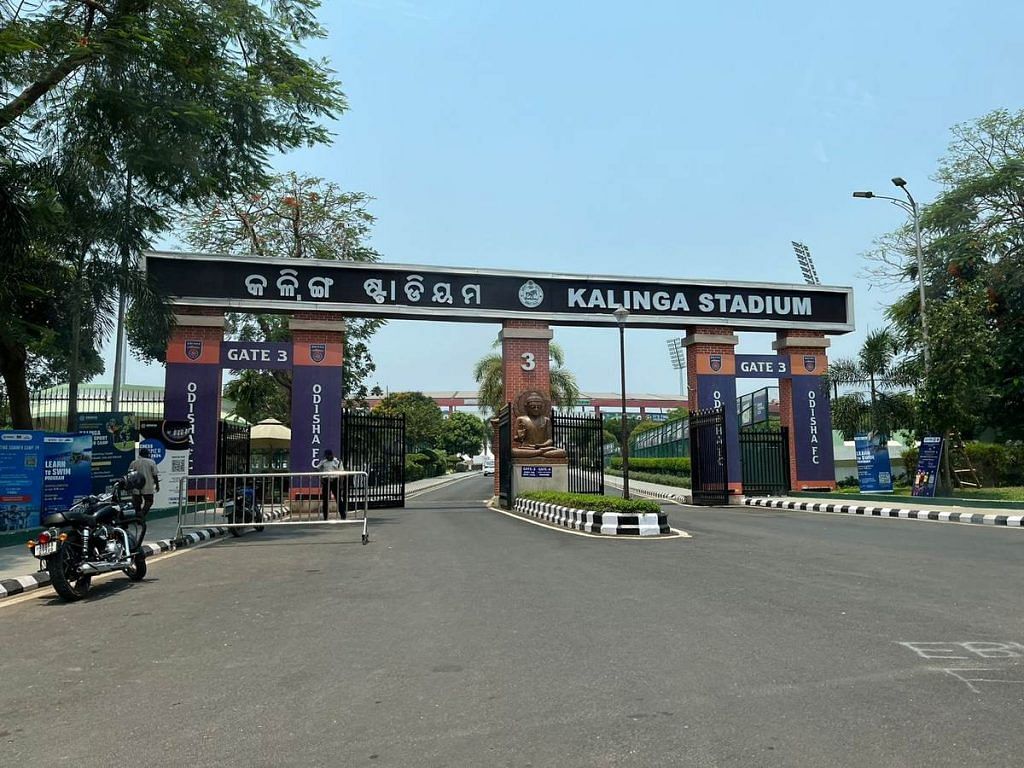
While Bhubaneswar remained much like any other provincial town for several decades, the push to modernise Bhubaneswar began in the early 2000s. The state government lobbied aggressively for investments in steel and aluminium industries, IT, tourism, healthcare, and education. It also pushed to develop infrastructure such as bridges, roads, and flyovers.
As early as 2008, Business Today reported how “big ticket investments in Odisha” from companies like Tata Steel and Arcelor Mittal were “transforming its capital from a sleepy tourist town to a glitzy business destination”. A few years later, the Smart City Mission acted as a booster shot, injecting further momentum into Bhubaneswar’s growth and quality of life.
“In the past 20 years, there has been a drastic change in terms of urban planning, with the provision of various amenities. Bhubaneswar has seen a significant transformation in infrastructure, with widening and interconnectivity of roads, flyovers, public transport, waste management, water supply, etc,” said Dr Piyush Ranjan Rout, a Bhubaneswar-based urban planner.
Metro project, rising property prices
Earlier this year, CM Patnaik laid the foundation of the Rs 6,225 crore Bhubaneswar Metro project, and while it will take a while to complete, it’s already put real estate prices on the fast track.
“We have noticed a 50 percent hike in real estate demand,” Swadesh Kumar Routray, president of the Confederation of Real Estate Developers’ Associations of India (Odisha), told ThePrint earlier. “People from Bengal and Andhra Pradesh are coming to Bhubaneswar and Cuttack to settle down. We are seeing many commercial, and residential projects like malls, hospitals, etc. People are more interested in investing in real estate after the metro project.”
Residential property prices in the Odisha capital have now rocketed to match Delhi rates.
“If you want to buy a 3BHK flat in Bhubaneswar in a decent society it will cost you around Rs 4 crore—the same as in Delhi or any other developed city,” said Bhubaneswar mayor Sulochna Das. “People are coming here to get settled and they are buying property.”
The metro project, which was included in the BJD’s 2019 manifesto, is targeted for completion within four years. “The tender process is open, and we’ll assign the contract and start physical work after the election,” said Siba Prasad Samantaray, CEO of the Bhubaneswar Metro Rail Corporation (BMRC), speaking to ThePrint. “The construction work of the Metro depot has started and there is also a master plan coming up to connect Puri and Khurda. We are planning to give all the contracts by December.”
Also Read: Naveen Patnaik reel sparks ‘lungi-vs-dhoti’ row in Odisha. ‘Lungi not Odia culture,’ says BJP
Development driving poll fight
In the run-up to elections, the BJD has inaugurated a slew of infrastructure projects this year. These include the Bhubaneswar Metro project, Mission Shakti Bazar (a market for showcasing products from women’s self-help groups), the state-of-the-art Netaji Subhash Chandra Bose Bus Terminal in Cuttack, and the 90-acre Anand Van urban forest in Bhubaneswar. Work is also in progress at the Capital Hospital building near the BD’s party office.
Not to be outdone, Prime Minister Narendra Modi also launched development projects worth over Rs 19,600 crore in Odisha last month. And in their campaign, BJP leaders are emphasising the role of the central government in Odisha’s development and claiming that the state government has fallen short in equipping schools and colleges with sufficient staff.
“Naveen Patnaik’s government is a copy-paste government. The central government has a share in the infrastructure development. The city has big hospitals, but doctors are not there. The schools don’t have teachers,” said Mukesh Mahaling, BJP MLA from Odisha’s Loisingha constituency. “Odisha needs a double-engine government.”
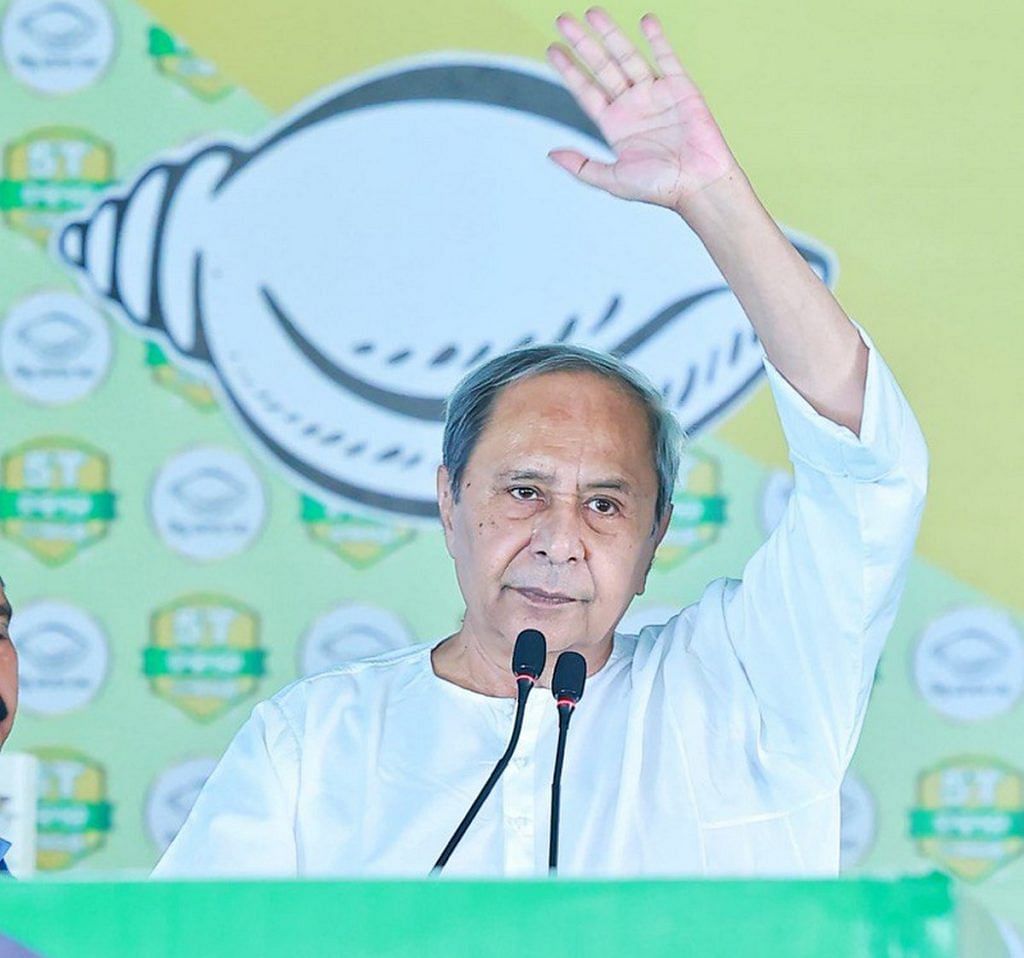
At a rally in Brahmapur’s Ambapua earlier this month, BJP president JP Nadda also focused on development. “Earlier, politics was about caste and religion, but PM Modi has made sure that it is based on development. Misrule has been prevailing under the BJD government in Odisha. It is establishing a ‘babu raj’ in the state,” he said.
In the 2019 elections, the BJP improved its tally for both Lok Sabha and Assembly seats in Odisha. Out of the total 147 assembly seats, it won 23, up from 10 in 2014, and replaced the Congress as the main opposition party. In the Lok Sabha polls, it won 8 out of the total 21 seats, up from just 1 in 2014.
However, despite being at the helm for nearly a quarter of a century, Naveen Patnaik still commands a loyal following in Odisha.
Several Bhubaneswar voters who spoke to ThePrint said they supported the BJD’s development model and social infrastructure projects.
“My husband and I will vote for the BJD. It is not like that everything is done and Bhubaneswar still has drainage problems during the rains, but we have hopes that the BJD will solve these problems,” said resident Ruby.
Another resident, 36-year-old Umesh Prishti returned to settle in Bhubaneswar after working in Bengaluru for 10 years. He claims it has every amenity that any city could hope for, and more. “My whole family loves the BJD’s work. This time also we will vote for Naveen Patnaik,” he said.
The BJD government has effectively crafted an image focused solely on development, which is likely to give it an edge in the elections, said senior political analyst Rabi Das.
“If you see the BJD’s campaign, all they do is talk about transformation, whether it’s roads, schools, hospitals, temples, or tourist places, etc,” he said. “There is no doubt that infrastructure has improved in Odisha but the fact remains that it still lacks human resources.”
(Edited by Asavari Singh)

